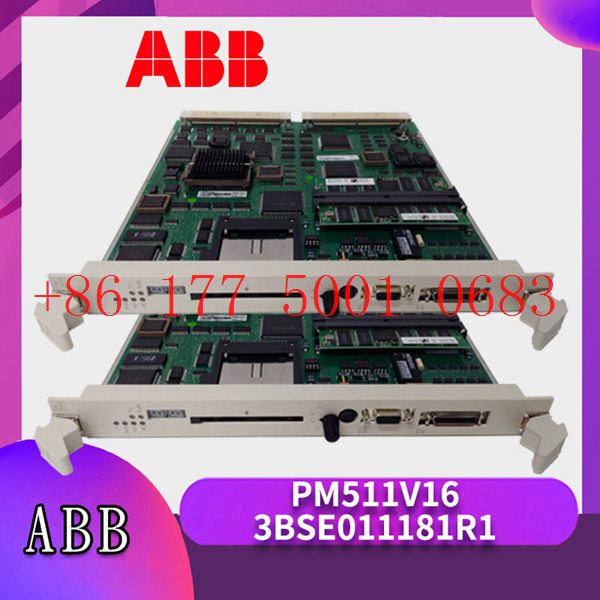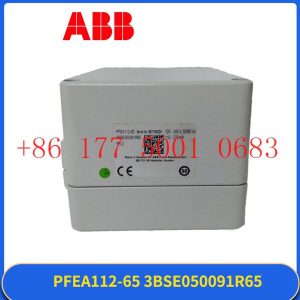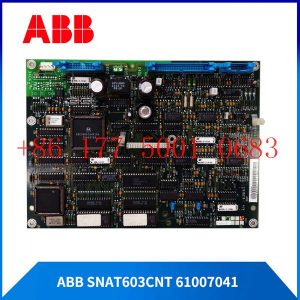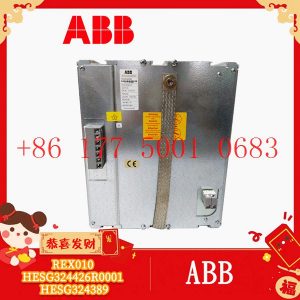Description
hardware flow control. It is an ideal choice in the field of industrial automation.
Figure 4 Tool Framework
2.3Smart component creation
Call the Rotator component: This component is used to allow the rotatable grinding rotor to rotate during simulation to simulate the real grinding scene. In the
parameters of the Rotator component, set the reference to object, the reference object to the frame l, and the object to a copy of the rotor. (2) The rotary grinding rotor
can be rotated, and the speed is l20mm/s (the speed of the grinding head will affect the quality of the finished product) ), the reference center axis is: axis (based on frame
l, centerpoint x, y,: set to 0, 0, 0, Axis set x, y,: 0, 0, l000mm).
Call the Attach component: This component is used to allow the rotatable grinding rotor to be integrated with the tool body. When the tool body is installed
on the flange, it can follow the movement of the flange. In the parameters of the Attach component, set the sub-object to be a copy of the rotor (2) for the rotatable
polishing rotor, and the parent object is the tool body of a copy of the rotor. The offset and orientation are
based on the offset of point B relative to the origin. For setting, you can use the measurement tool in Robotstudio software to measure, and then set the parameters
after measurement.
Verification: Install a copy of the rotor tool body onto the robot flange, and then click Execute in the Attach component. You can observe whether the position of the
rotatable grinding rotor is correct at this time. If there is a deviation, adjust the position in time, as shown in the figure. 5 shown.
Figure 5 Tool installation
2.4 Create tool coordinate system
Use the six-point method to create the tool coordinate system Too1data on the robot teach pendant at the center of the rotor. Change the tool coordinate
system to Too1data in the basic options. At this time, click on the robot manual linear and you can drag the robot to move linearly at will.
2.5 Creating trajectories and programming
Determine the trajectory: According to the requirements of the work task, design the grinding trajectory around the workpiece and determine the trajectory
points and transition points required for the grinding trajectory. The grinding action process is shown in Figure 6.
Setting I/O and programming: Yalong IY-l3-LA industrial robot deburring and grinding system control and application equipment adopts 0sDC-52 6/o
communication board, the address is 10, Do1 is the digital output signal, the address is 1 . First set the I/O board, then set the I/O digital output signal Di1,
and then program on the simulation teaching pendant. The procedure is as follows:
PRoCmain()
setDo1: Set the Do1 signal to allow the external grinding rotor to start rotating.
waitTime1: The robot stays in place and does not move, waits for 1s, and lets the polishing rotor turn to the specified speed, transition
MoveAbsjjpos10NoEoffs,v1000,z50,Too1data1: The robot moves to the initial point jpos10 above point p10. Point jpos10 is used as the starting
point and end point of the robot”s action.
Move4p10,v1000,z50,Too1data1: Move straight line grinding to point p10
Move4pL0,v1000,z50,Too1data1: Move straight line grinding to pL0 point
Move4p30,v1000,z50,Too1data1: Move straight line grinding to point p30
Move4p40,v1000,z50,Too1data1: Move straight line grinding to p40 point
Move4p10,v1000,z50,Too1data1: Move straight line grinding to point p10
MoveAbsjjpos10NoEoffs,v1000,z50,Too1data1: The robot moves to the initial point jpos10 above point p10
waitTime1: wait 1s, transition
ResetDo1: Reset the Do1 signal to stop the rotor ENDPRoC
2.6 Simulation design and verification
Simulation design: Create a smart component to input the Di1 signal, and use the Di1 signal to simulate the external polishing start signal to
execute the Rotator component and Attach component of the smart component to achieve the visual effect of rotating and polishing the polishing rotor.
In the workstation logic design, the smart component input Di1 signal is associated with the robot Do1 signal, so that the robot signal Do1 can control
the smart component input Di1 signal, thereby controlling the start and stop of the rotation of the polishing rotor.
Verification: In the program of the teaching pendant, first set the pp command to move to Main, and then set the robot startup mode to automatic.
Click play in the simulation of Robotstudio software to verify whether the trajectory is consistent with the assumption, and optimize the path in time for
problems existing in the simulation.
3Summary and outlook
This design is based on the programming simulation of the Yalong Y4-1360A industrial robot deburring system to control the grinding robot workstation.
It covers aspects such as creating a workstation, setting
up tools, creating smart components, creating tool coordinate systems, creating trajectories, programming, simulation design, and verification. Starting
with it, the polishing simulation of the workstation is realized through the smart component function of Robotstudio software. The animation effect is intuitive
and lifelike, which not only facilitates teaching demonstrations, but also facilitates program debugging, and has application value for both production and teaching.
In the planning and design of the workpiece grinding trajectory, according to the different roughness and grinding amount process requirements of the
workpiece, the rotation speed, feed speed, feed amount, and grinding angle of the grinding rotor are also different. The feed amount can be adjusted in
time according to the on-site conditions. , feed speed, rotor speed, grinding angle and other parameters. After appropriate adjustments, the motion trajectory is written with the
corresponding program on the Robotstudio software to further reduce the possibility of robot collisions and singular points contained in the trajectory
during the actual debugging process. ,Optimize paths and improve debugging efficiency.
Excitation system ABB module 3BSC950192R1
Excitation system ABB module 3BSC690126R2
Excitation system ABB module 3BSC690103R2
Excitation system ABB module 3BSC690103R1
Excitation system ABB module 3BSC690102R2
Excitation system ABB module 3BSC690102R1
Excitation system ABB module 3BSC690076R5
Excitation system ABB module 3BSC630149R0001PXUB201
Excitation system ABB module 3BIE010749
Excitation system ABB module 3BHT300036R1
Excitation system ABB module 3BHT300032R1
Excitation system ABB module 3BHT300025R1
Excitation system ABB module 3BHL000986P7002
Excitation system ABB module 3BHL000986P7001 LWN1902-6
Excitation system ABB module 3BHL000986P7001
Excitation system ABB module 3BHL000986P7001
Excitation system ABB module 3BHL000986P7000
Excitation system ABB module 3BHL000986P0006
Excitation system ABB module 3BHL000986P0006
Excitation system ABB module 3BHL000764P0001
Excitation system ABB module 3BHL000396P0001
Excitation system ABB module 3BHL000392P0101
Excitation system ABB module 3BHL000391P0101
Excitation system ABB module 3BHL000390P0104 5SHX1960L0004
Excitation system ABB module 3BHL000320P0001
Excitation system ABB module 3BHL000250P0002
Excitation system ABB module 3BHE059696R0001
Excitation system ABB module 3BHE056573R0101
Excitation system ABB module 3BHE041464R0101
Excitation system ABB module 3BHE039770R0102 PPD539A102
Excitation system ABB module 3BHE039426R0101 UFC912A101
Excitation system ABB module 3BHE039203R0101 GVC736CE101
Excitation system ABB module 3BHE039203R0101
Excitation system ABB module 3BHE037864R0106
Excitation system ABB module 3BHE037864R0106
Excitation system ABB module 3BHE035301R0003
Excitation system ABB module 3BHE035301R0001
Excitation system ABB module 3BHE033067R0101
Excitation system ABB module 3BHE032285R0102 XVC772A102
Excitation system ABB module 3BHE032285R0102
Excitation system ABB module 3BHE032025R0101
Excitation system ABB module 3BHE031065R0020
Excitation system ABB module 3BHE029110R0111
Excitation system ABB module 3BHE029110R0111
Excitation system ABB module 3BHE028959R0101 PPC902CE101
Excitation system ABB module 3BHE028761R1002
Excitation system ABB module 3BHE028761R1001
Excitation system ABB module 3BHE027859R0102 DDC779CE102
Excitation system ABB module 3BHE026284R0102
Excitation system ABB module 3BHE024855R1101
Excitation system ABB module 3BHE024855R0101
Excitation system ABB module 3BHE024855R0101
Excitation system ABB module 3BHE024577R0101 PPC907BE
Excitation system ABB module 3BHE024577R0101 HIEE401807R0001
Excitation system ABB module 3BHE024577R0101
Excitation system ABB module 3BHE024577R0101
Excitation system ABB module 3BHE024415R0101
Excitation system ABB module 3BHE023584R2025
Excitation system ABB module 3BHE022455R1101
Excitation system ABB module 3BHE022333R0101
Excitation system ABB module 3BHE022294R0101 GFD233
Excitation system ABB module 3BHE022294R0101
Excitation system ABB module 3BHE022287R0001
Excitation system ABB module 3BHE021951R0124
Excitation system ABB module 3BHE021951R0124
Excitation system ABB module 3BHE021889R0101 UFC721BE101
Excitation system ABB module 3BHE021889R0101









Reviews
There are no reviews yet.